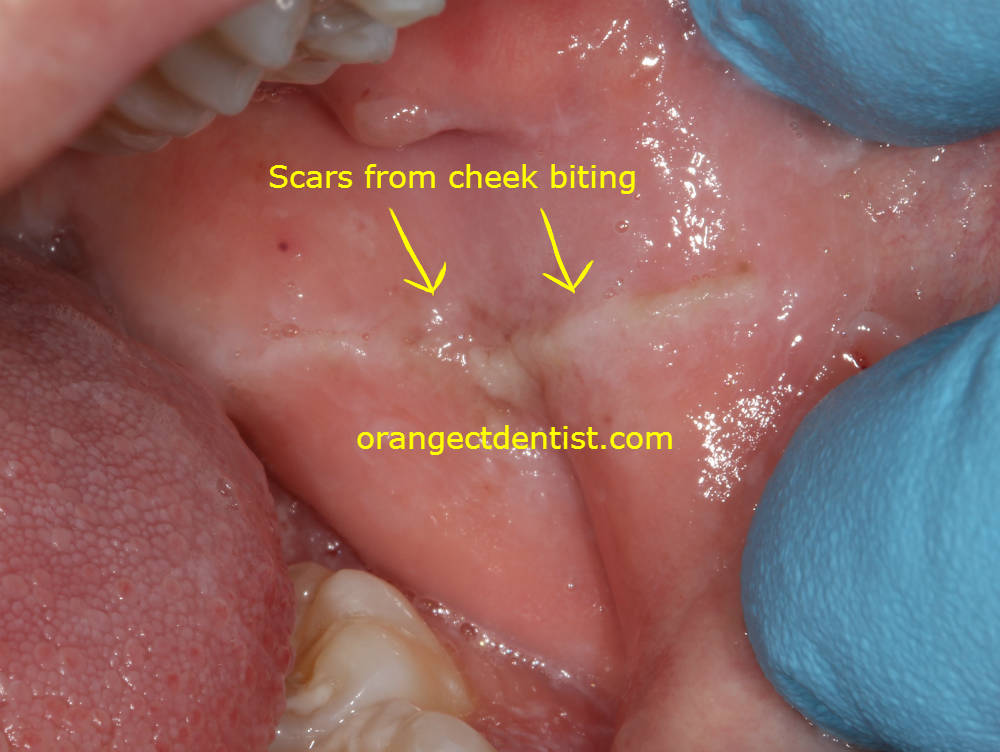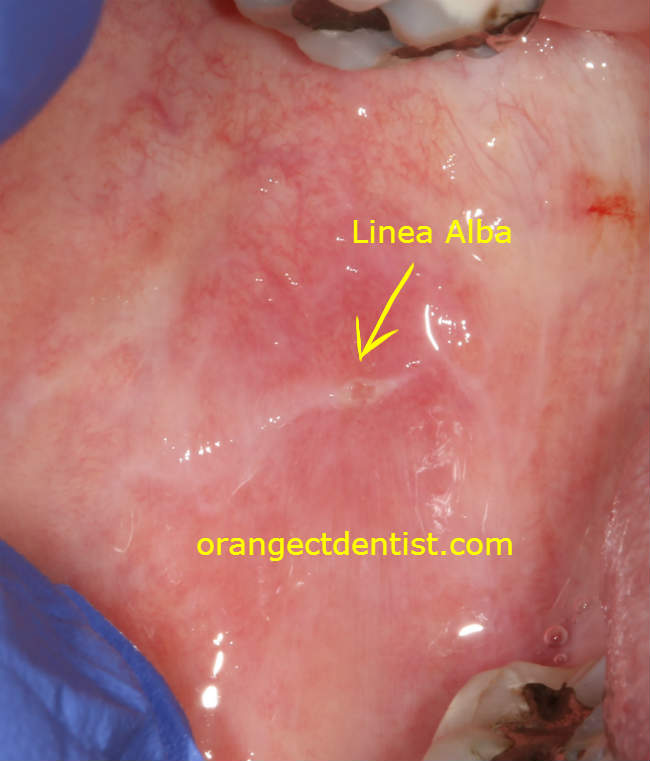Cheek biting is a fairly common finding detected on a dental visit. Cheek biting involves the repeated biting or chewing of the inner soft tissue of the cheek resulting in the development of a line of scar tissue. There are numerous causes for this which will be described in detail later.
Photograph and Description of Chronic Cheek Biting

Photograph of chronic cheek biting on the left cheek on a patient from Milford, CT. Photo by Dr. Nicholas Calcaterra.
The photo above shows the classic pattern as seen on a patient in our office in Orange, CT. We see the characteristic linea alba (Latin for white line, also known as linea alba buccalis) extending horizontally, roughly following the upper and lower teeth. The soft tissue is raised, typically non painful, and is nearly always found on both cheeks. It is comprised of fibrous tissue in response to chronic irritation from the teeth.
Reasons for Cheek Biting
Patients will bite their cheeks for many reasons. An incomplete list includes:
- Insufficient space in their mouth for all their teeth such that the inner surface of the cheek is constantly in the way of the very last teeth. This most frequently occurs in patients who still have their wisdom teeth.
- Particularly sharp cusps on back teeth.
- Teeth that are angled towards the cheek.
- A problem with the alignment of the upper and lower teeth called a posterior crossbite.
- Nighttime grinding or clenching of the teeth.
- A daytime or nighttime habit in which the patient knowingly or unknowingly “sucks” on the inner cheek. A key finding for this reason is that you only see the linea alba on one side.
- A single missing tooth in the back, allowing for the cheek to get caught while chewing.
How Cheek Biting is Treated
The treatment is completely dependent upon how and why the cheek biting is occurring. Common solutions include:
- Removal of the wisdom teeth if they are a factor in why the biting is occurring.
- Selective and conservative shaping of the teeth of there are sharp points.
- Orthodontic treatment if the biting is due improper angulation of the teeth.
- An appliance to wear at night.
- Replacement of missing teeth with dental implants.
Each instance of cheek biting is unique and the appropriate solution cannot always be developed without a thorough history and exam. In addition, other conditions, such as oral cancer, need also to be considered.

